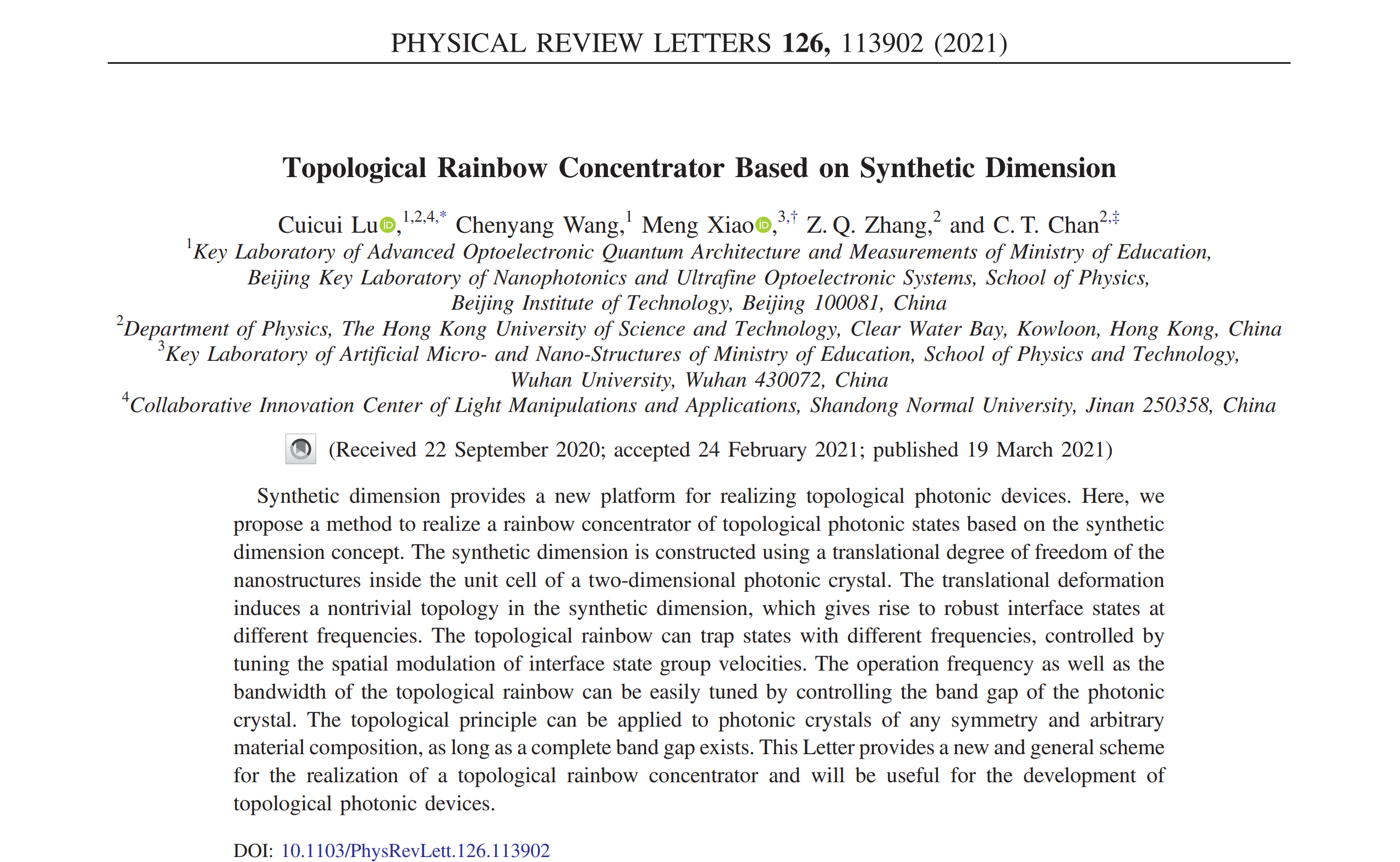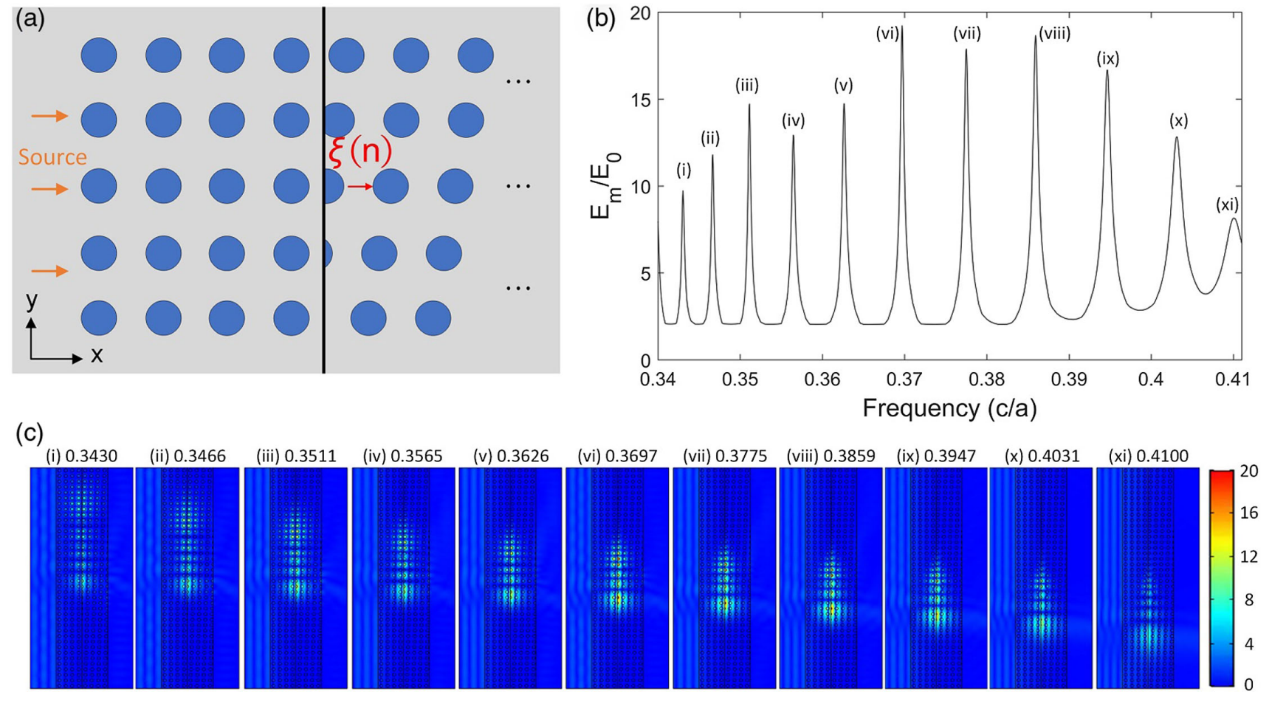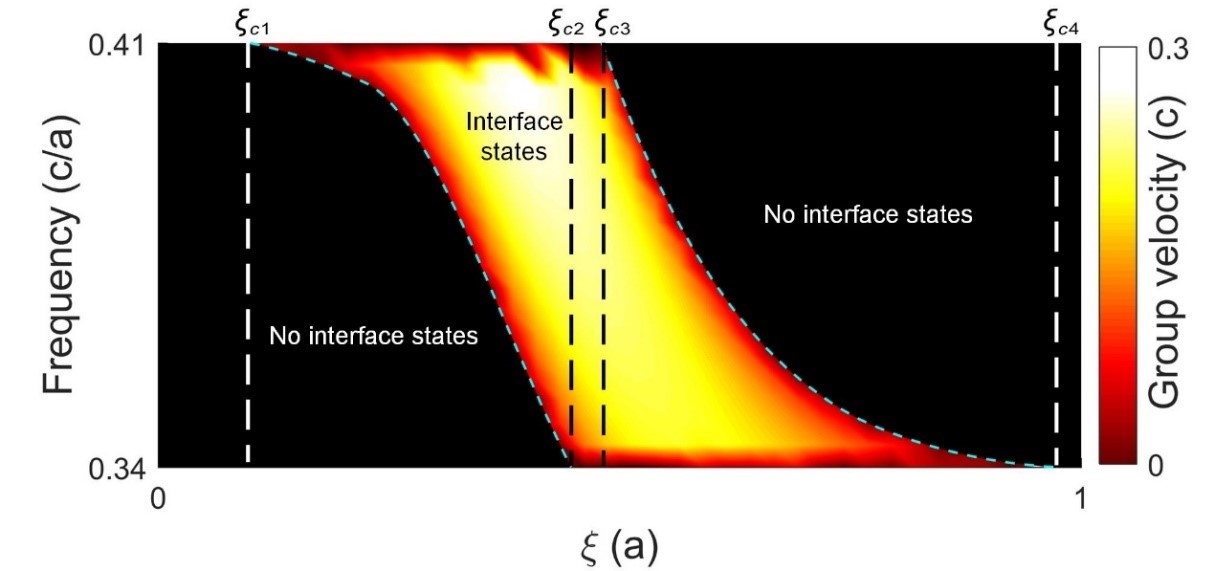Topological rainbow concentrator based on synthetic dimension
来源: 作者: 发布时间:2022-10-13
Prof. Cuicui Lu, from the School of Physics, Beijing Institute of Technology, together with Prof. Meng Xiao from Wuhan University and Prof. C. T. Chan from Hong Kong University of Science and Technology, proposed to adopt the translation of photonic lattice as a synthetic dimension to construct topological states, which realized the photonic crystal topology rainbow and slow light effect. The work was published in Physical Review Letters.
Nanophotonic devices with photons as information carriers have important applications in optical communication, optical information processing, optical computing, and other related fields, which are the core components of next-generation photonic chips. In recent years, the concept of topology has been extended from condensed matter physics to the fields of photonics, acoustics, and cold atomic systems, which has greatly promoted the development of topological physics. Topological photonics, in particular, has gradually become an important frontier-crossing field in photonics and related sciences. Topological photonic states are protected by topology and have the advantages of robustness and anti-interference compared with traditional photonic states. Therefore, topological photonic states provide a new platform for the realization of nanophotonic devices. Over the past few years, researchers’ interests have mainly focused on the realization method and new properties of topological states, such as one-way transmission, high order topology, the topological laser, etc. However, there is no general method to realize multiple topological states with different frequencies in the same structure.

Fig. 1 (a) The schematic diagram of the structure excited by plane wave along the x direction. (b) The spectrum of enhancement rate of the maximal intensity over the incident plane wave Em=E0. (c) The electric intensity distribution of the peaks in (b).
Based on an earlier work about nanophotonic routers (Optica, 6, 1367, 2019), Prof. Cuicui Lu et al. further introduced the synthetic dimension to photonic crystals, which provides a new idea for the realization of topological optical wavelength routers. It is found that when the translation of a lattice is gradually changed from zero to a lattice constant, the Zak phase is exactly 2π, which corresponds to the appearance of topological edge states. This synthetic dimension can also be constructed in other ways, such as linear gradients, sine and cosine functions, etc. Different synthetic dimensions can realize the "captivity" of topological states with different frequencies. Therefore, the electric field of topological photonic states with different frequencies can be separated, steered, and trapped within different positions, namely, the "topological rainbow". The structure is simple and easy to implement, which lays a foundation for topological routing, topological slow light, topological optical storage, and other applications. This method can be used to construct " topological Chern insulators" with multiple topological edge states and large Chern numbers without breaking the time-reversal symmetry. When suffering structure scaling, random error introduction, material defects or impurity interference, etc. the topological rainbow devices based on synthetic dimensions can be protected by topology and the operating band will not disappear.

Fig. 2 The group velocity distribution shown in the dispersion diagram of synthetic space.
This method has good universality. It only needs the photonic crystal to have a band gap, which can be satisfied by general photonic crystals. And it has no restrictions on lattice type, symmetry, band, etc. At the same time, the realization of the topological state has no restrictions on the material. Optical materials in the visible and near-infrared bands in nature almost have no magnetic response. This method doesn’t need magnetic response material and supports the general dielectric materials. So, it provides a reliable solution for the implementation of topological devices in the nanoscale optical frequency band. At the same time, it provides a new idea for topological photonic nanodevices integrated on chips.
Prof. Cuicui Lu is the first and co-corresponding author, Prof. Meng Xiao and Prof. C. T. Chan are also corresponding authors. This work was mainly supported by the National Natural Science Foundation of China, Beijing Institute of Technology Research Fund Program for Young Scholars, and Hong Kong Research Grants Council.
Paper information:
Cuicui Lu,* Chenyang Wang, Meng Xiao,† Z. Q. Zhang, C. T. Chan,‡ "Topological Rainbow Concentrator Based on Synthetic Dimension", Physical Review Letters 126, 113902 (2021).
The paper link: https://journals.aps.org/prl/abstract/10.1103/PhysRevLett.126.113902




